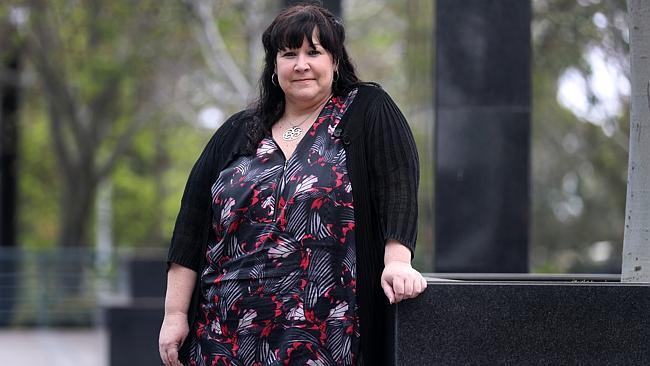Domestic violence a workplace cultural challenge
Workplaces are a key setting for the prevention of violence against women.

Workplace cultures must include rejecting sexism, discrimination and violence against women, the chairwoman of the nation’s peak domestic violence awareness body Our Watch says, but support and training policies are helping.
White Ribbon Day, part of an effort to end violence against women, was held yesterday, and former senator Natasha Stott Despoja, Australia’s ambassador for women and girls, says workplaces are a key setting for the campaign.
But employers have warned that allowing just one day of paid domestic leave could cost the Australian business community up to $205 million a year, and potentially allow workers to take up to 20 per cent of the working year off without pay.
These estimates are based on arguments against union enterprise bargaining claims, which base the figures on 25 per cent of female workers and 10 per cent of men accessing paid domestic violence leave.
Stott Despoja says action needs to be taken at the grassroots and in workplaces because time spent at work significantly influences attitudes, beliefs and behaviours in personal and private lives.
“Women’s experiences of violence, even if occurring in the home, impact on the workplace,” Stott Despoja says. “By implementing programs and policies to prevent violence against women, workplaces stand to benefit through increased productivity, reduced absenteeism, decreases in staff turnover and improvements in staff health and wellbeing.”
Workplaces from corporations to universities and small businesses are introducing policies — many controversial — to allow time off for those suffering from domestic violence.
Last month Victoria’s Metro Trains signed a controversial new enterprise bargaining deal guaranteeing workers up to 20 days of domestic violence leave.
The Australian Chamber of Commerce and Industry has raised concerns about paid domestic leave, as has the Australian Industry Group, which is concerned perpetrators also could access the leave.
“A male employee who is physically violent towards his female partner and subsequently receives text messages that are by their nature ‘abusive’ would also be entitled to (take) leave,’’ its recent submission to the Fair Work Commission notes.
The federal government also introduced a $104m, three-year domestic violence action plan that includes protecting indigenous women and their children.
More than 100 women were killed or were victims of attempted murder in family and domestic violence incidents last year.
It is not just domestic violence, Stott Despoja says, calling for an improvement in structural change such as calling out sexual harassment, improving gender equality, making sure women are valued in the workplace and talking about issues affecting staff.
SA Power Networks chief executive Rob Stobbe, a member of the Chiefs for Gender Equity group, says domestic violence policies and gender diversity go hand-in-hand and relate to the attitudes of actions of men in the workplace.
His workforce, which looks after the maintenance of South Australia’s electricity poles and wires, comprises about 75 per cent men in engineering and maintenance roles.
“A lot of it comes back to years and years of programming of people through home life, community life and work life,” Stobbe says.
“One of the key links between gender diversity and domestic violence is what are the perceptions of women, whether it be conscious or unconscious bias, it’s what do we think of women and getting the message across that we’re equal and all need opportunities to achieve in life.
“It’s also about the treatment of women generally — it’s not just who got hit or killed, there’s a lot of other harassment and social exclusion as well.”
Stobbe has introduced two weeks of domestic violence leave, which includes counselling and external support.
***
Helping hand could be just a phone call away
Helping a friend or a colleague who has been the victim of domestic violence does not mean being a hero, Michelle Peterson says, and can be as simple as offering them phone numbers for support services.
Peterson, the organisational change manager at SA Power Networks, has been helping implement a new domestic violence policy at her workplace that includes encouraging staff from the top down to undergo the White Ribbon Advocacy online training program.
“One statistic that really made an impact on me was that domestic violence is the biggest cause of injury or death to women between 18 and 45,” Peterson says.
“That’s simply unacceptable. It impacts our communities and our workplaces and we all need to be part of the solution.”
Peterson says the training provides tools to deal with challenging sexist language and jokes in the workplace, and to be more understanding of those who may be suffering from the effects of domestic violence, personally or through family and friends.
She says even addressing a room of workers as “guys” sets a bad example and, while many people associate domestic violence with physical abuse, it can also mean financial and emotional abuse, inappropriate sledging and sexist jokes.
“Starting from an early age there is an appropriate way to address people,” she says.
“Letting little things slip can lead to potential things happening like thinking it’s OK, like calling women derogatory terms or thinking it’s OK to give them a backhand or not give them money.” Whether a co-worker is a victim, a victim’s sister, a perpetrator or a victim’s son, Peterson says the training shows staff that nobody should put up with domestic violence and they have a right to feel safe at work.
“As leaders we need to be accountable, and starting to call out behaviours in the workplace and at home is important, it’s 24/7,” she says.
Peterson has seen friends suffer domestic violence and says she will be better equipped to offer them direction if needed, rather than thinking she can help solve their problems.


